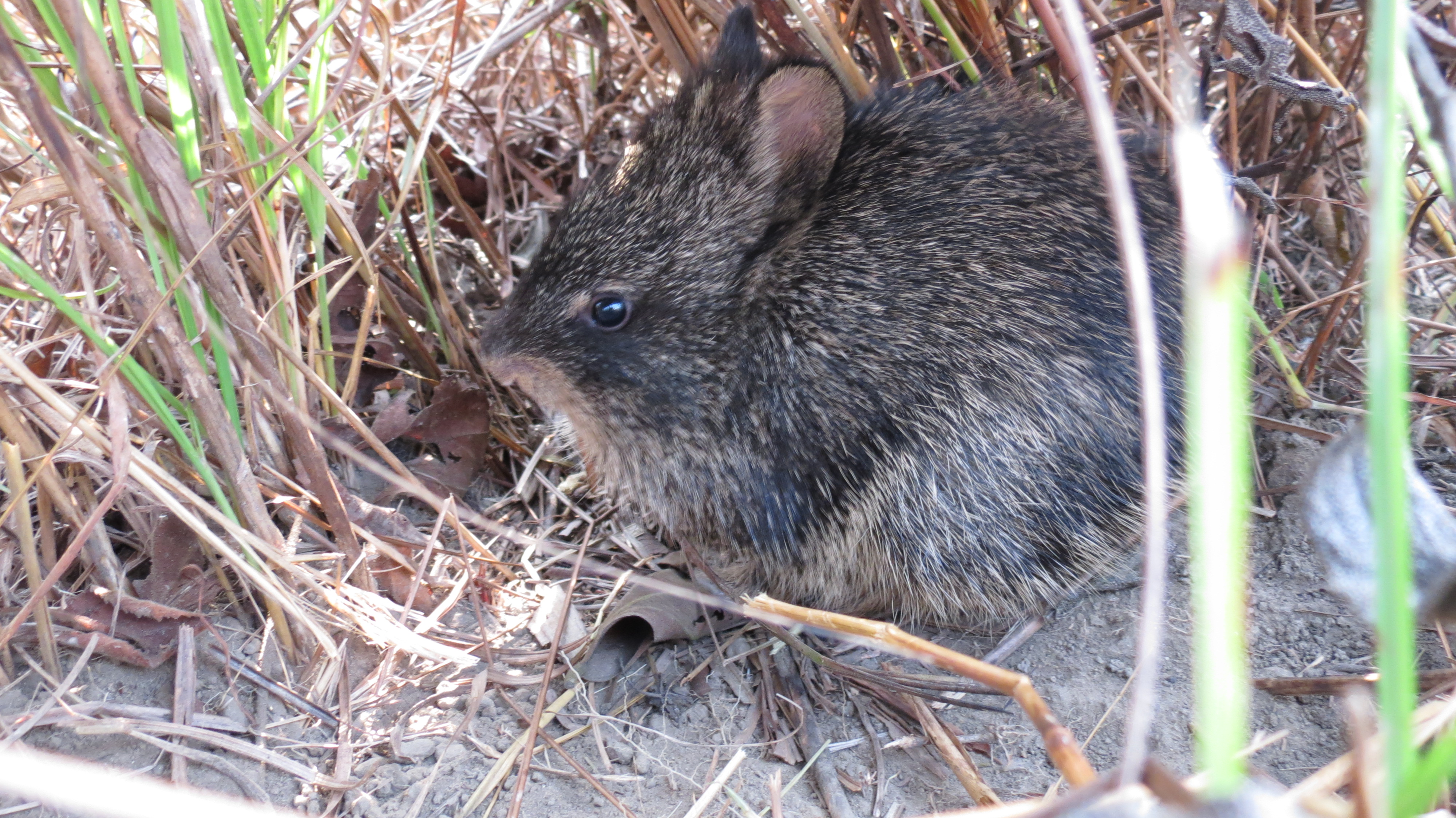
Small mammal thought to be extinct rediscovered in Nepal’s national park
The hispid hare (Caprolagus hispidus) is in the list of critically endangered small mammals. It was thought to be extinct from Chitwan National Park as it had not been spotted again after its first spotting in 1984.
Now, there is good news for nature lovers and conservationists. A baby hispid hare was caught on camera by a conservationist in Chitwan National Park, 150 kilometres southwest of Nepalese capital Kathmandu.
“The fact that the hispid hare was a baby indicates that there are also parents and both male and female,” says Bed Khadka, who is a conservation officer at Chitwan National Park.
Khadka has published an article in the journal Conservation Science (CS) detailing his rediscovery of the small rabbit-like species.
“It’s a small mammal species smaller than the regular rabbit and larger than a rat,” Khadka says. “We had taken it to be extinct from the national park as it had not been spotted after 1984.”
The species inhabits the lowlands of Ganges floodplain. Rare sightings have been reported in India and Nepal, but mostly it is not seen. The recent sighting has shown that it has a resurrection possibility and can be conserved.
The present government and international efforts on animal conservation are focussed on large mammals like the tiger and rhino with the idea that conservation of large mammals will in turn conserve the ecosystem as a whole and so conserve the small animals too.
“Now I see a need of some programmes to protect some of these small animals too,” says Khadka.
Khadka has been studying a bird called the Bengal Florican for several years and the hispid hare was spotted while studying the Bengal Florican.
The population of the hispid hare is rapidly declining due to anthropogenic pressure and grassland fire. In protected areas in Nepal, grassland burning is used as a management tool by park authorities to create new grass shoots for grazing animals.
“Until now, we cannot predict downstream effects of current grassland management, although continuous grassland burning in protected areas might become a possible threat to rare hispid hares,” says Khadka.
“Therefore, further study about their presence-absence, population status needs to be done throughout the grassland of the low land of Nepal including the newly rediscovered park”, he adds.
The article Rediscovery of the hispid hare (Caprolagus hispidus) in Chitwan National Park, Nepal after three decades, Bed Bahadur Khadka, Bhupendra Prasad Yadav, Nurendra Aryal and Achyut Aryal was published in the latest episode (Vol.5, No. 1) of Conservation Science, pp 10-12. The article is made available online on the NepJOL platform with the support of INASP.
About the journal
Conservation Science (CS) is a peer-reviewed open access journal devoted primarily to the dissemination of up-to-date knowledge about global, regional and national conservation issues and the ways to tackle them. The journal is published by Kathmandu Institute of Applied Sciences. It promotes interdisciplinary research that has strong implications for the conservation of products and services provided by nature.
About NepJOL
NepJOL hosts over 125 journals published from Nepal, covering the full range of academic disciplines. The objective of NepJOL is to give greater visibility to participating journals and to the research they convey. NepJOL was initiated in June 2006 and officially launched in September 2007. It is a project supported by INASP and locally managed by Tribhuvan University Central Library. It aims to promote the awareness and use of Nepal-published journals in all disciplines by providing access to tables of contents (TOCs), abstracts and full text on the Internet.
About INASP
Founded in 1992, INASP is an international development organization working with a global network of partners in Africa, Latin America and Asia. In line with the vision of research and knowledge at the heart of development, INASP works to support individuals and institutions to produce, share and use research and knowledge, which can transform lives.
INASP’s approaches are based on the core pillars of capacity development, convening, influencing and working in partnership. INASP promotes equity by actively addressing the needs of both men and women across all our work and addressing issues of power within the research and knowledge system. INASP has projects in 28 countries, supporting all aspects of research and knowledge systems, from facilitating the provision of information to researchers to helping parliamentarians and civil servants to use research and evidence in policy making.
Disclaimer: Research published in journals hosted on the NepJOL platform is selected by the journals in accordance with their own editorial processes and criteria. INASP and Tribhuvan University Central Library provide hosting and guidance on good practices but are not involved in selection of research.
For further information
Thakur Amgai, Communications Consultant, INASP
Email:tamgai@inasp.info
Dr Sangita Shrestha, Communications Officer, INASP
Email:sshrestha@inasp.info

 Previous Post
Previous Post


